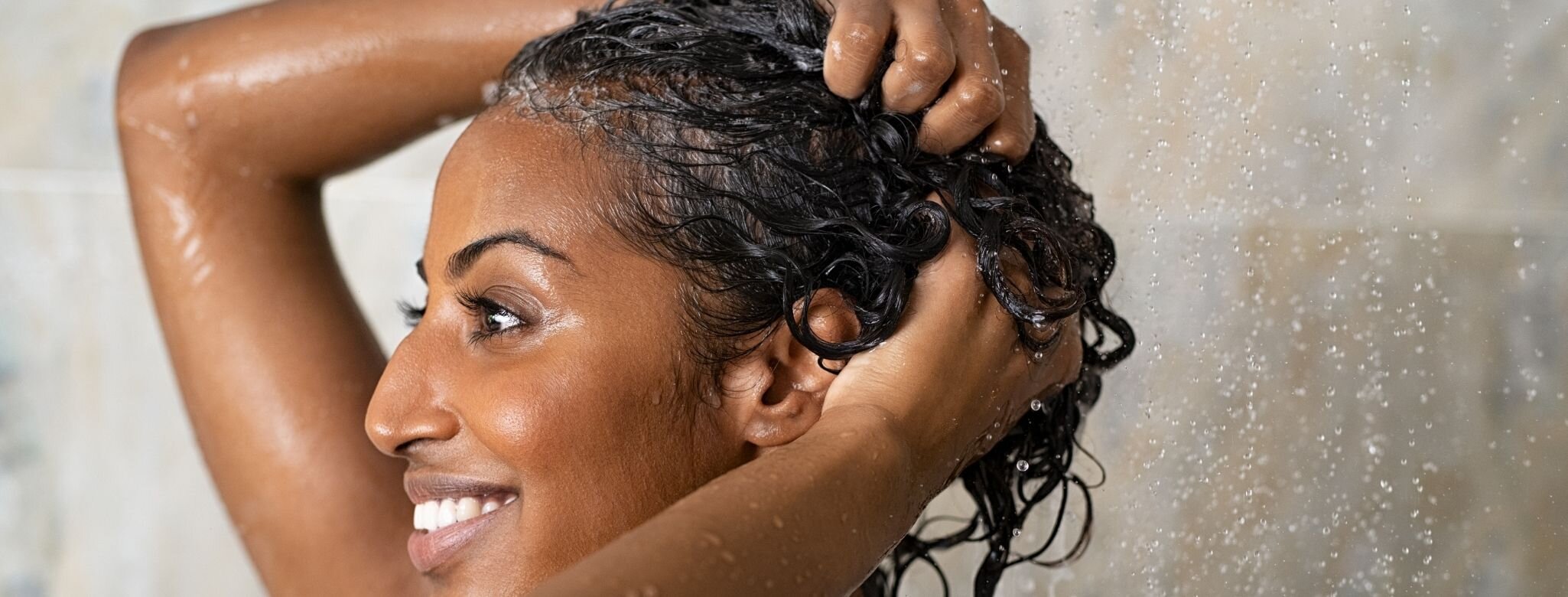Types of Hair Conditioner
Hair is continually being damaged by thermal (heat), mechanical (combing and brushing) and chemical stress (day to day products, relaxants and colour.) Because the hair can not repair itself the damage is accumulative. Hair grows at between 0.25 and 0.33 inches per month. This means that hair that is eight inches long has about 2 years of accumulative damage (1). Damaged hair is weaker which means it is prone to breakage and ‘fiber splitting’ or ‘split ends’ and flattening of the cuticle. Damaged hair also develops a negative surface charge which results in ‘fly away’ hair that lacks luster.
Damage also interferes with how well the hair is lubricated with natural oils or sebum. This effects the appearance of the natural fibres, and will invariably make the hair look dull.
Conditioners, generally being positively charged, will temporarily, neutralise the negative charge on the hairs surface. As such conditioners are used to increase the ease of hair combing, reduce fly-away hair and improve the way it feels (ibid) . The addition of oils will also help lubricate the fibres, leaving the hair soft and shiny.
On the main, conditioners are meant to be used after shampooing as they counteract the roughness that results from cleansing.
What are conditioners?
You might see a variety of different products defined as conditioners. At the most basic level they are products that help keep the hair in a good state of appearance. Many people think that a conditioner has to contain a certain set of conditioning ingredients such as cationics, but this is not necessarily the case, there are not really any defined set of ingredients that categorise what a hair conditioner is. That said, most conditioners contain cationic moieties; positively charged materials that counteract damaged hairs negative charge.
Conditioners are generally used at pH levels above the isoelectric point of hair, that is, on negatively charged hair fibres.’(1)
The most widely used positively charged conditioning agents are quaternary ammonium compounds. Of these, cetyltrimonium chloride (CTAC) and stearalkonium chloride (SAC) are probably the most widely used. They are usually used alongside lipid conditioners such as long chain alcohols (1).
This results in the smoothing down of hair fibres. You might see conditioners described as rinses, treatments and co-washes. They typically tend to be oil in water emulsions.
There are little differences in constituents among hair rinses, conditioners, treatments and packs, but hair treatments and hair packs also contain proteins, amino acids,, moisturising ingredients, and/or other efficacious constituents known to repair damage. (4)
The different categories of conditioners are as follows:
Rinse out conditioners
Leave in conditioners
Moisturising conditioners
Volumising conditioners
Conditioning treatments (such as hair masks)
Rinses
Rinse out conditioners are designed to be used after shampooing. They are of a low viscosity and contain low levels of cationic materials and fatty alcohols. They are designed for hair that has minimal damage. Because of the low levels of stabilising ingredients they can be issues with stabilising in extreme heat and cold. They can be used on a daily basis.
Leave-in Conditioners
They can be water thin aqueous (water based) solutions containing a cationic moiety (often a cationic polymer) such as polyquaternium-10, polyquaternium-11 and/or guar hydroxypropyltimonium chloride (cationic guar). They tend to be clear or a hazy slightly thickened liquid that is sprayed easily. They will typically have low or no oil/lipid based ingredients.
Moisturising Conditioners
These tend to have high levels of cationic materials, fatty acids and lipids that are again rinsed out. The advice is to apply to wet hair after shampooing, leave on for a few minutes and then rinse out. They are of a thick and creamy consistency. Not only do they neutralise negative charge, but also add lipids to the surface of the hair. They are designed for hair that has significant damage.
Volumising Conditioners
Hair thickening conditioners are designed to give thin, flat hair more body. It’s impossible to increase the amount of hair you have or ‘thicken’ each strand, however there are ingredients that can give the illusion of thicker hair by reducing the amount of space between each strand. Polymeric materials will attach to the hair electrostatically and add body to hair, resulting in it looking fuller. Quaternized proteins strengthen the cuticle without weighing the hair down. These conditioners are usually more challenging to formulate as there needs to be a balance between using enough of the ingredients to create body without weighing the hair down.
Hair Treatments or Packs
These speciality conditioners are designed to be used on an infrequent basis and are to address specific problems. They tend to have higher levels of specific ingredients i.e fatty acids, lipids and cationics, and are intended to be applied for extended periods of time. Sometimes they require post shampooing to remove any excess oils or conditioning ingredients.
References:
Warren, C (2015); Conditioner/Treatments; Harry’s Cosmeticology, 9th Edition, Volume 3, Springer
Shipley, C (2015) Shampoos, Ingredients, Formulation and Efficacy Evaluation in Harry’s Cosmeticology Volume 3, 9th Edition
Bhushan B. (2010) Introduction—Human Hair, Skin, and Hair Care Products. In: Biophysics of Human Hair. Biological and Medical Physics, Biomedical Engineering. Springer, Berlin, Heidelberg. https://doi.org/10.1007/978-3-642-15901-5_1
Hiroshi, I, Shimadar, K (2013) Formulas, Ingredients and Production of Cosmetics: Technology of skin-and Hair-Care Products in Japan, Springer

